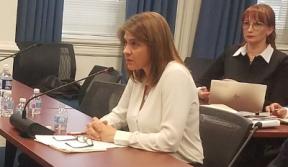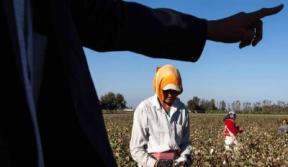The intractability of child labor and forced child labor in West Africa’s cocoa fields has long been the epitome of unjust trade and exploitative corporate practices. The recent call by Sens. Sherrod Brown (D-Ohio) and Ron Wyden (D-Ore.) for U.S. Customs and Border Protection to stop U.S. imports of cocoa produced with forced child labor is exactly the wake-up call the chocolate industry needs.
There is no good reason for Americans’ hunger for a luxury product like chocolate to be sated by child laborers, much less children in debt bondage. Since a series of exposés in 2000 and 2001, the cocoa traders and chocolate manufacturers have taken their own sweet time experimenting with a hodge-podge of community investment projects, rather than making a binding commitment to put an end to the problem. It’s time to disrupt business as usual.
In 2002, the International Labor Rights Forum filed a petition for the enforcement of Section 307 of the Tariff Act with respect to cocoa imported from Ivory Coast. The petition included evidence that, due to extensive use of middlemen who buy from dozens of small producers, it is virtually certain that every shipment of Ivorian cocoa entering the United States contains at least some product made with forced child labor. CBP rejected the petition, however, due to a “consumptive demand” loophole in the law, which allowed forced-labor tainted products to be imported if they were necessary to meet consumer demand. In 2015, the loophole was closed, making clear that Americans’ objection to forced labor is paramount. Consumer desires, much less corporate business models, do not justify perpetuating forced labor.
With the legal loophole now closed and the Washington Post’s recent documentation of forced child labor in cocoa, it is now time for CBP to act decisively. There is no reason to believe that things have changed since 2002. ILRF’s 2014 report, The Fairness Gap, confirmed that the method for buying and transporting cocoa from the fields is very much the same. Farmers who lack access to market still rely on middlemen for cash advances and to transport their cocoa.
The persistence of forced child labor in cocoa is also echoed by the U.S. Department of Labor. They list Ivorian cocoa among the goods made with forced and child labor.
The U.S. Department of State has drawn a similar conclusion. Their 2019 Trafficking in Persons report references cases of boys being trafficked in the Ivorian cocoa sector – as was the case 20 years ago.
Yet these investigations are only able to document a fraction of the problem. Trafficking victims, especially child laborers who are in debt bondage, are incredibly hard to find and even harder to document. They are afraid they will be arrested or sent back and their parents may suffer repercussions as a result. Meanwhile, the cocoa farmers themselves are barely able to send their own children to school due to the lack of schools and their own extreme poverty. The Voice Network estimated in its 2018 Cocoa Barometer that cocoa farmers in Ghana and Ivory Coast are earning less than a third of what they need for a living income. Last month, both governments moved to set a minimum price for cocoa beans, which some hope will help efforts to address extreme poverty among cocoa farmers.
It’s important to recognize efforts on the ground and the First Lady of Ivory Coast has admirably reinvigorated her country’s fight against child labor, creating the National Oversight Committee, which obliges companies to report on their myriad social interventions to a government coordinating body. But industry commitments are still voluntary and resources insufficient for the scale of the problem. In 2010, chocolate industry leaders renewed their commitment to the Harkin-Engel Protocol, committing to a 70 percent reduction of the worst forms of child labor by 2020. Yet a DOL-funded study from 2015 showed minimal progress and leading initiatives to monitor child labor and improve cocoa farmers’ welfare are currently only designed to reach 15 percent and 18 percent of the affected population.
For twenty years of industry initiatives to have had so little impact is unacceptable. Moreover, it is extremely unlikely they have made a dent in the much harder to find problem of forced child labor.
Clearly more needs to be done to snap the industry out of another twenty years of lackluster efforts. It’s time for CBP to prevent cocoa harvested using forced child labor from entering the United States. Decisive action by CBP should then be followed on immediately with a binding commitment from industry leaders to ensure adequate financing for solutions that are developed through a transparent process, negotiated in collaboration with farmers, farm worker organizations, and child rights advocates.

